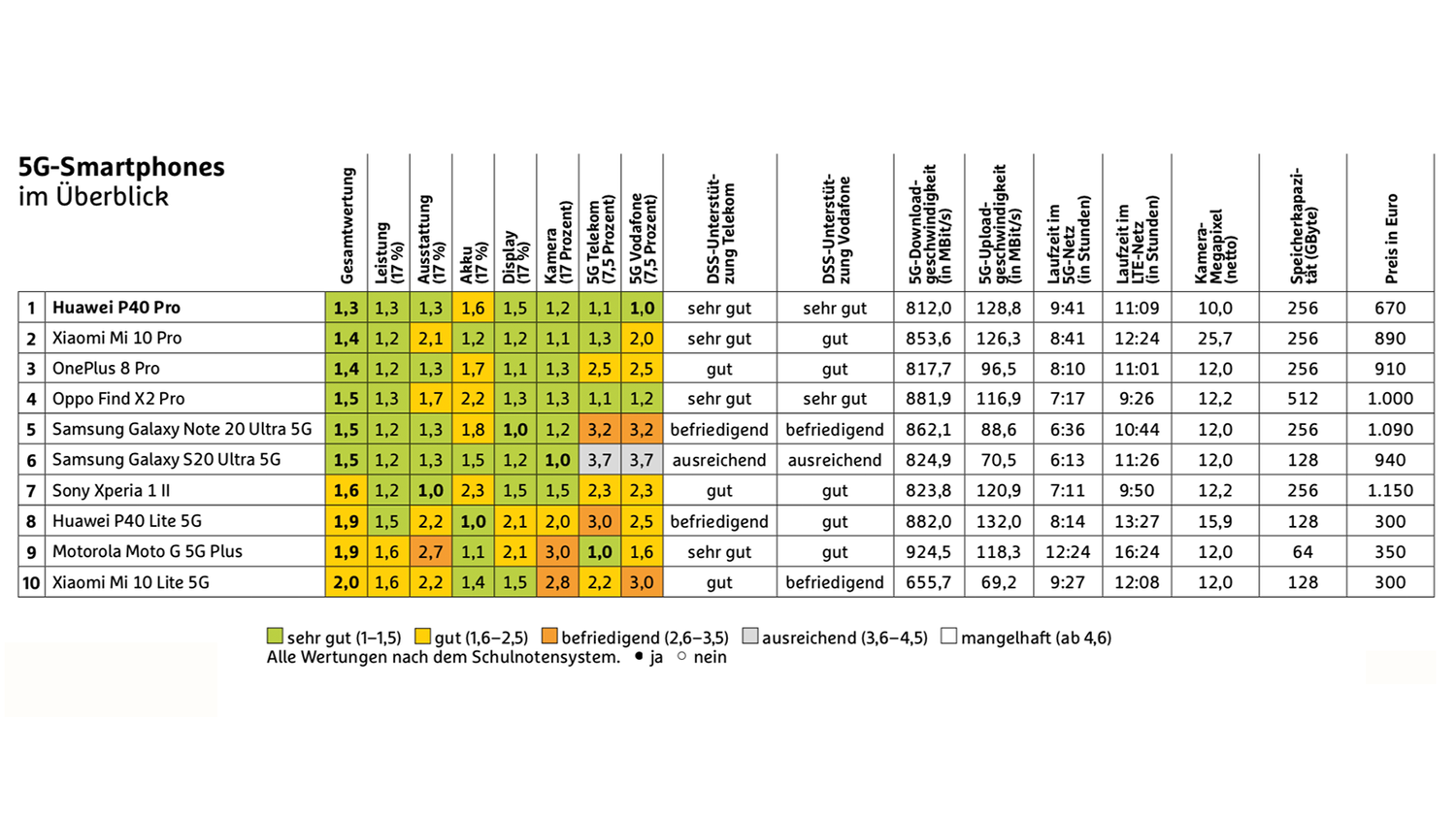The need for fast connections is greater than ever. For the 5G rollout, Telekom and Vodafone are relying on frequency sharing with LTE. The problem: no cell phone can cope perfectly with this - and that even applies to the network operators' official tariff smartphones. Our CHIP test center examined the current 5G Smartphones on heart and kidneys. The result? A Smartphone, which functions equally optimally in all German 5G nets, is missing up-to-date.

What 5G fans should have heard of
Before buying a 5G smartphone, you should be familiar with the acronyms NSA and DSS. The shortcut NSA stands for Non-Standalone and means that the 5G network does not work separately. The existing LTE core network serves as a necessary foundation without which nothing works. A smartphone then not only transmits and receives via the new 5G band, but also needs a so-called LTE anchor band to connect to the core network. This works well as long as it happens on the frequencies exclusively reserved for 5G around about 3.5 GHz. This is because no matter what LTE anchor band is required by the base station, 5G smartphones can handle any combination of 5G and LTE anchor as long as they run on this frequency.
However, this is not the case when 5G is offered over other frequencies via Dynamic Spectrum Sharing (DSS). There is not a single smartphone that supports all 5G and LTE anchor combinations. More annoyingly, many models lack important combinations. This is a problem because the network coverage over 5G-DSS is much higher than that with the frequencies reserved for 5G. This means that many customers have a 5G smartphone that often cannot receive 5G.
So what is the advantage of DSS? Network operators can also offer 5G on frequencies that they have already expanded for LTE. This is inexpensive and makes 5G quickly available in the area. So it is completely understandable that Telekom and Vodafone are pushing this technology.

More transparency for consumers
It is clear, however, that networks and devices are still far from being optimally compatible. It is therefore important for potential buyers to carefully research whether the desired device really works in their locally available 5G network. Unfortunately, the model name currently says nothing about the DSS capabilities of the respective 5G smartphone. It remains the responsibility of manufacturers and providers to inform customers about this in a transparent manner. Telekom and Vodafone have announced that they will be making up for this in the future.
5G users should also know that there is still a need for optimization in terms of battery life. During the test, we were able to observe a higher battery load in the 5G network across all devices. The loss can be considerable. For example, the Huawei P40 Lite 5G achieves only 61 percent of LTE runtime and the Galaxy S20 Ultra only 54 percent. The Huawei P40 Pro, which achieves 87 percent, does better.
Huawei & Xiaomi are the 5G test winners
The Huawei P40 Pro scores the best overall score of 1.3. Our text experts rate the DSS support at both Vodafone and Telekom as very good. The Xiaomi Mi 10 Pro made it to second place with an overall grade of 1.4. The DSS support of this smartphone scores very well at Telekom, Vodafone offers solid, good support.


